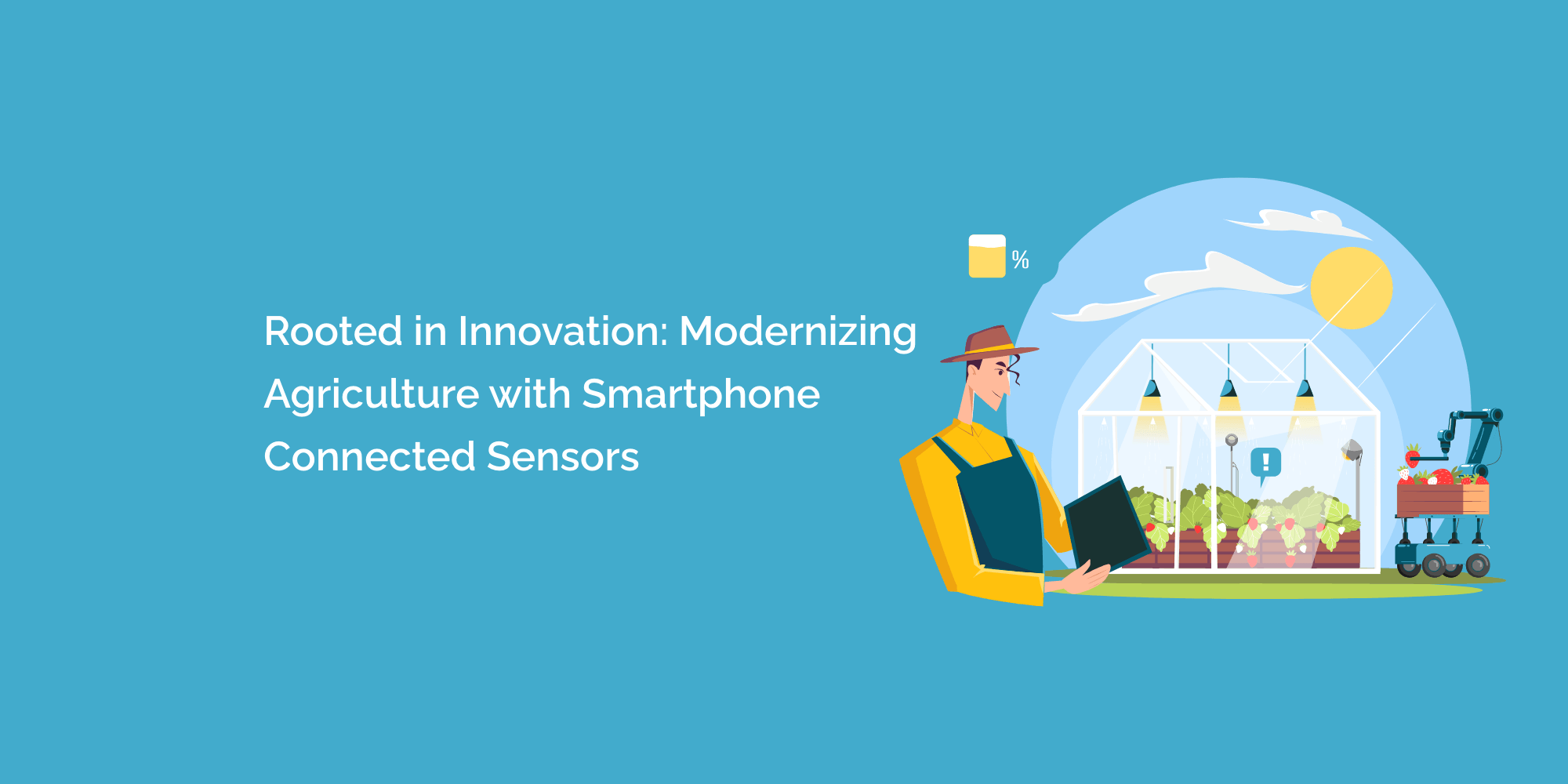Agriculture, one of the world's oldest and most essential industries, is undergoing a remarkable transformation. Modern technology has found its way into every aspect of farming, from precision planting to automated harvesting. Among the many technological advancements, smartphone-connected sensors are playing a pivotal role in revolutionizing how farmers manage their crops and livestock. In this comprehensive guide, we will explore the innovative world of smartphone-connected sensors in agriculture, understanding their significance, how they work, their applications, and the immense benefits they bring to modern farming practices. Join us on this journey to discover how these tiny devices are helping farmers become more efficient, sustainable, and connected than ever before.
The Agricultural Revolution and the Need for Innovation
Agriculture has come a long way since its origins. Today, we are in the midst of a new agricultural revolution, driven by the need to:
1. Feed a Growing Population: The global population is expected to reach 9.7 billion by 2050, demanding increased food production.
2. Preserve Resources: Farmers face the challenge of producing more with fewer resources, including land, water, and labor.
3. Sustainability: Sustainable agriculture is a priority to reduce the environmental impact of farming.
The Role of Sensors in Modern Agriculture
Sensors are at the heart of modern agriculture's transformation:
1. What Are Sensors: Sensors are devices that gather data from the physical world, converting it into a format that can be analyzed and acted upon.
2. Types of Sensors: Various sensors are used in agriculture, including soil moisture sensors, weather sensors, livestock tracking sensors, and more.
3. How Sensors Work: Sensors collect data on parameters such as temperature, humidity, soil moisture, and transmit it wirelessly to smartphones or other devices for analysis.
Smartphone Connectivity
Smartphones have become essential tools for modern farmers:
1. Remote Monitoring: Farmers can remotely monitor sensor data on their smartphones, giving them real-time insights into their operations.
2. Data Analysis: Dedicated apps and software help farmers analyze sensor data to make informed decisions.
3. Notifications and Alerts: Smartphones can send notifications and alerts based on sensor data, allowing for immediate action.
Applications of Smartphone-Connected Sensors
These sensors find applications across various sectors of agriculture:
1. Precision Agriculture: Sensors help optimize planting, irrigation, and fertilization for higher yields and resource efficiency.
2. Livestock Management: Livestock sensors track animal health, behavior, and location, enhancing animal welfare and productivity.
3. Environmental Monitoring: Weather and environmental sensors aid in pest management, disease prediction, and climate monitoring.
4. Irrigation Management: Soil moisture sensors help farmers optimize irrigation, conserving water resources.
Benefits of Smartphone-Connected Sensors
The adoption of these sensors brings numerous benefits to farmers:
1. Increased Efficiency: Sensors provide real-time data, enabling precise resource management and reducing waste.
2. Cost Savings: Optimized resource use leads to lower operating costs.
3. Sustainability: Sustainable practices are promoted through resource conservation and reduced environmental impact.
4. Data-Driven Decisions: Farmers make informed decisions based on sensor data, increasing the likelihood of success.
Use Cases and Success Stories
Explore real-world examples of how smartphone-connected sensors are transforming agriculture:
1. Precision Farming: A case study on how sensors and smartphones are used for precise planting and resource management.
2. Livestock Tracking: A success story showcasing how sensors improve livestock tracking and health management.
3. Environmental Monitoring: An example of how weather sensors aid in disease prediction and climate monitoring.
Challenges and Concerns
While smartphone-connected sensors offer numerous benefits, there are challenges and concerns to consider:
1. Cost of Adoption: The initial investment in sensors and smartphones may be a barrier for some farmers.
2. Data Privacy: Concerns about the privacy and security of sensor data must be addressed.
3. Technical Knowledge: Farmers need training and support to effectively use sensor technology.
Conclusion
Smartphone-connected sensors are ushering in a new era of agriculture, where data-driven decisions and sustainable practices are the norm. As you embark on your journey as a modern farmer, remember that these tiny devices have the power to transform your farm into a more efficient, productive, and environmentally friendly operation. The integration of technology into agriculture is not just a trend; it's a necessity to meet the challenges of feeding a growing population while safeguarding our planet's resources. Embrace the innovation, stay connected, and watch your farm thrive in the 21st century and beyond.








